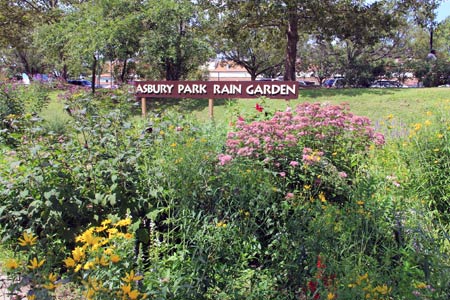
A few weeks ago, I went on a site visit to Asbury Park, N.J. Nope, not to visit the Stone Pony, one of the world’s best-known music venues and a favorite hot spot for visits by Bruce Springsteen. Even better, I was there to visit the trees.
Asbury Park is one of five inaugural Community ReLeaf project sites, which is why I found myself on my way to New Jersey. On my first day, I met with Tom Pivinski with the Asbury Park Environmental Shade Tree Commission and Lisa Simms with the New Jersey Tree Foundation to discuss the area’s urban forest and our Community ReLeaf project, which is assessing the urban forest in a number of ways, including how they can best maximize their open space by planting more trees, especially in areas that were hit by Hurricane Sandy. We had an excellent time sitting out in a local rain garden — developed by the Asbury Park Environmental Shade Tree Commission — where we talked with our field crew about the status of the current assessment, which looks at the changes in the urban forest canopy after Hurricane Sandy hit. We are looking forward to the final results coming out soon and seeing some potential urban forest planting scenarios that would best benefit the local community.

We also took a tour around the city, looking at areas that were the most affected by the storm, like Library Park, which lost 23 trees. We stopped by the new urban community garden that hosts both private garden beds and public ones for anyone in the community who wants to come by and pick all sorts of healthy fruits and vegetables. And, we stopped by the site of our upcoming volunteer tree event, where we will be hosting 30-40 volunteers from our generous partners at the Bank of America Charitable Foundation and IKEA at the end of September to come learn about the benefits of urban forests and celebrate city trees by planting them!
The second and final morning that I was there, I had an excellent meeting with several members of the Asbury Park Environmental Shade Tree Commission (and a few lovely canine friends) to learn about the history of the urban forest in Asbury Park, the current work that is underway and the variety of challenges and opportunities that face the urban forest there. I was especially excited to discuss the Community ReLeaf project and ideas for leveraging the assessment results in the coming months.
It was wonderful to see so many different elements of an urban forest — from rain and community gardens to city parks and trees — during my trip, and I am looking forward to our Asbury Park tree planting later this month.